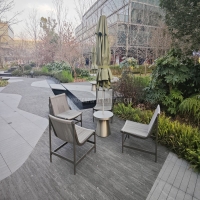Welcome to the website for landscape facilities products and knowledge.
How does the bin’s design accommodate users with temporary injuries?
Modern bin designs prioritize inclusivity, especially for users with temporary injuries such as sprains, fractures, or post-surgery limitations. Here’s how thoughtful engineering ensures accessibility:
1. Ergonomic Handles: Many bins now feature soft-grip or extended handles, reducing strain on wrists and fingers. This is particularly helpful for those with limited hand mobility.
2. Touch-Free Mechanisms: Motion-sensor or foot-pedal bins eliminate the need for gripping or bending, ideal for users with arm or back injuries.
3. Lightweight Construction: Bins made from lightweight materials are easier to lift or move, accommodating users with reduced strength.
4. Wide Openings & Low Profiles: Bins with wide lids or low heights minimize awkward movements, aiding those with mobility restrictions.
5. Stable Bases: Non-slip or weighted bottoms prevent tipping, ensuring safety for users relying on one-handed operation.
By integrating these features, bin designs empower individuals recovering from injuries to maintain independence in daily waste disposal.
Related search:

Recommendation
Metal structure rattan chair without armrests for single person, with woven seat and backrest.